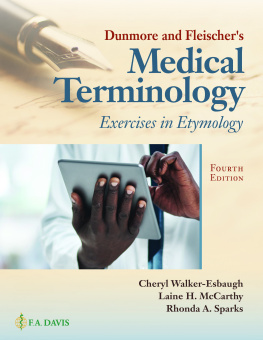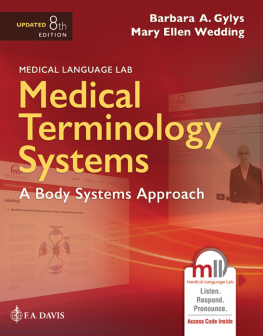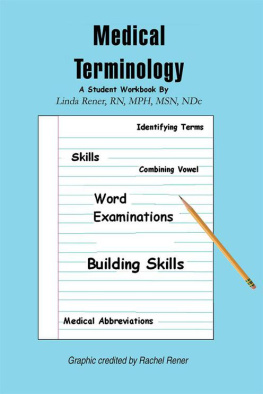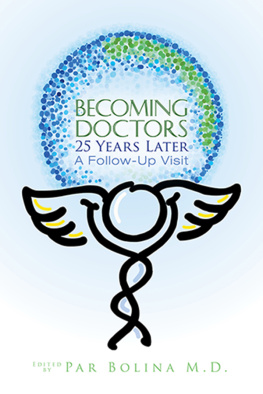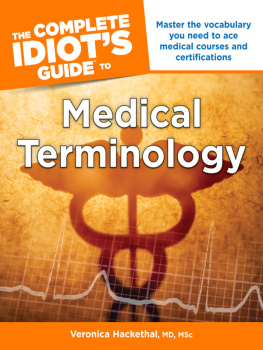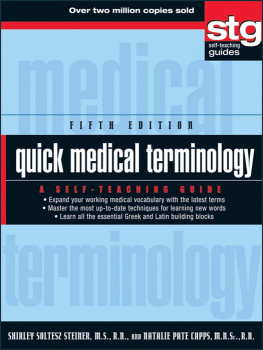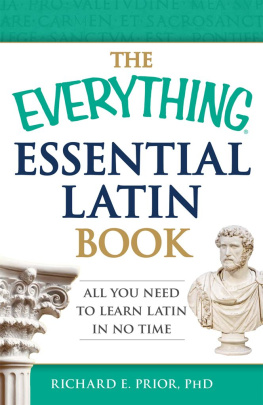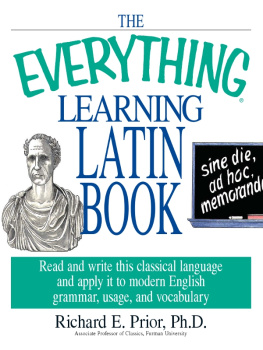Contents
Guide
Pages
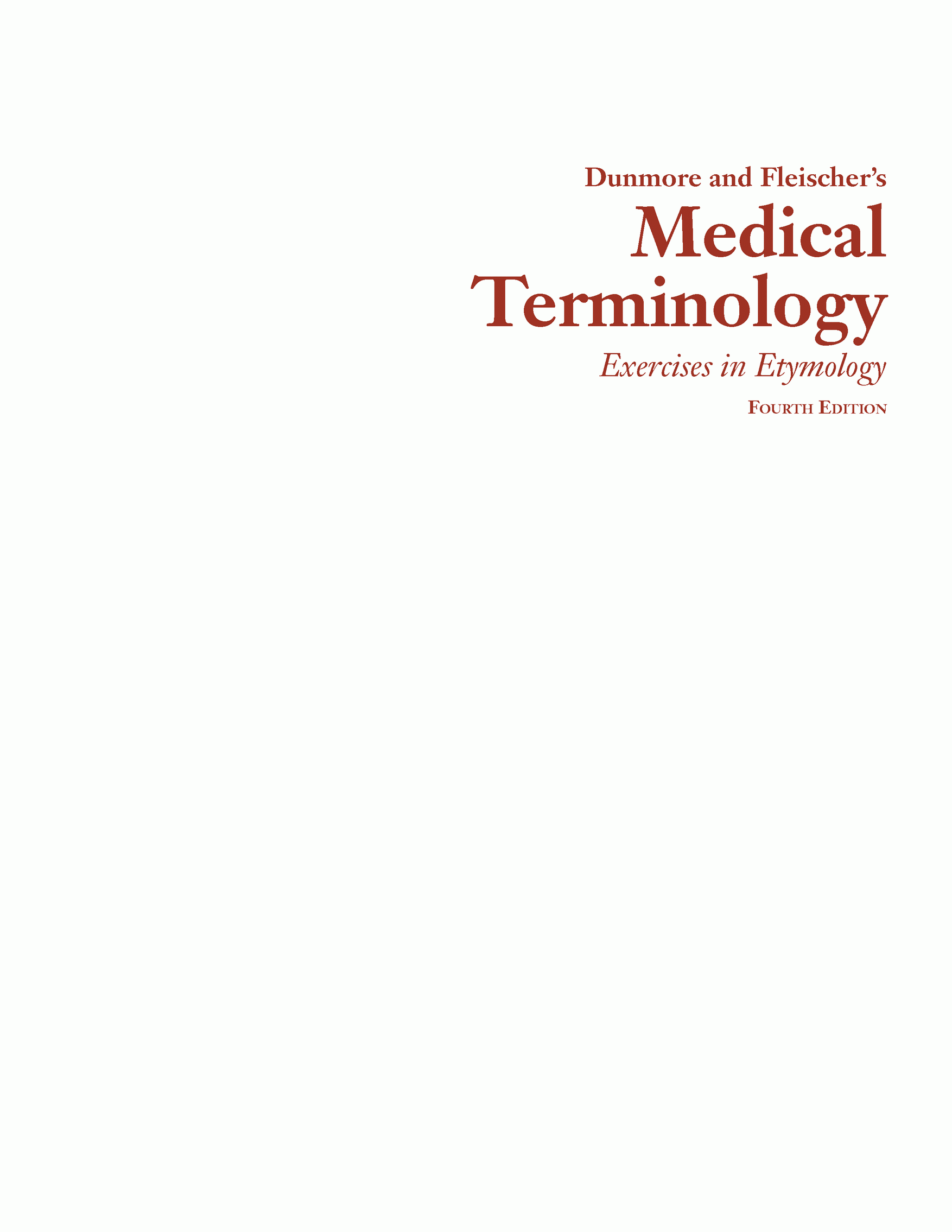

F. A. Davis Company
1915 Arch Street
Philadelphia, PA 19103
www.fadavis.com
Copyright 2023 by F. A. Davis Company
Copyright 2023 by F. A. Davis Company. All rights reserved. This product is protected by copyright. No part of it may be reproduced, stored in a retrieval system, or transmitted in any form or by any means, electronic, mechanical, photocopying, recording, or otherwise, without written permission from the publisher.
Printed in the United States of America
Last digit indicates print number: 10 9 8 7 6 5 4 3 2 1
Publisher: T. Quincy McDonald
Director of Content Development: George W. Lang
Developmental Editor: Dean DeChambeau
Content Project Manager: Julie Chase
Art and Design Manager: Carolyn OBrien
As new scientific information becomes available through basic and clinical research, recommended treatments and drug therapies undergo changes. The author(s) and publisher have done everything possible to make this book accurate, up to date, and in accord with accepted standards at the time of publication. The author(s), editors, and publisher are not responsible for errors or omissions or for consequences from application of the book, and make no warranty, expressed or implied, in regard to the contents of the book. Any practice described in this book should be applied by the reader in accordance with professional standards of care used in regard to the unique circumstances that may apply in each situation. The reader is advised always to check product information (package inserts) for changes and new information regarding dose and contraindications before administering any drug. Caution is especially urged when using new or infrequently ordered drugs.
Library of Congress Control Number: 2022948235
Authorization to photocopy items for internal or personal use, or the internal or personal use of specific clients, is granted by F. A. Davis Company for users registered with the Copyright Clearance Center (CCC) Transactional Reporting Service, provided that the fee of $.25 per copy is paid directly to CCC, 222 Rosewood Drive, Danvers, MA 01923. For those organizations that have been granted a photocopy license by CCC, a separate system of payment has been arranged. The fee code for users of the Transactional Reporting Service is: 978-0-8036-9395-1/22 0 + $.25.
We dedicate this book to the health-care professionals
whose courage and dedication has inspired and
comforted us in these unprecedented times of
the COVID pandemic.
Preface
In 1977, Charles W. Dunmore, an associate professor of classics at New York University, and Rita M. Fleischer, from the Latin/Greek Institute at City University of New York, published a novel approach to teaching the challenging language of medicine. Indeed, medicine does have a language all its own, based largely on a vocabulary drawn from ancient Greek and, to a lesser degree, Latin. This approach involved teaching students to recognize the roots of medical terminology, the etymology of the words health-care professionals use to communicate with each other and with patients. By teaching students the root elements of medical terminologythe prefixes, suffixes, and combining forms from Greek and LatinDunmore and Fleischer sought not only to teach students modern medical terminology but also to give them the ability to decipher the evolving language of medicine throughout their careers.
In the fourth edition of this book, we have continued what Dunmore and Fleischer began. This new edition is organized essentially as Dunmore and Fleischer created it, with some important modifications to facilitate ease of use. The text is organized into interrelated units. ) takes a body systems approach that combines Greek and Latin elements used to describe the digestive system, respiratory system, and so forth. These first 15 lessons comprise the main body of the text. Each lesson builds and expands on the grammar and vocabulary introduced in the previous lessons.
For students who want additional exposure to medical terminology from a body systems perspective, the four lessons in Unit 4 provide just such an opportunity. These lessons include the hematopoietic and lymphatic, musculoskeletal, nervous, and endocrine systems.
Unit 5 stands on its own and provides an overview of biological nomenclature, the language used by scientists and physicians to identify the living organisms that exist in our world.
The pronunciation of medical terms follows the same rules that govern the pronunciation of all English words. The consonants c and g are soft before the vowels e, i, and y. That is, they are pronounced like the c and g of the words cement and ginger. Before a, o, and u, the consonants are hard and are pronounced like the c and g of cardiac and gas. The consonant k is always hard, as in leukocyte. The long vowels eta and omega of Greek words are marked with the macrons and ; this indicates that they are pronounced like the e and o of hematoma. Long i is pronounced eye, as in the -itis of appendicitis. Words are pronounced with a stronger accent (emphasis) on one syllable. The accent falls on the second to last syllable if that syllable is long. To be considered long, a syllable must contain a short vowel followed by two consonants, a diphthong, or a long vowel (neph-r-tis). If the second to last syllable is short, the accent falls on the third syllable from the end of the word (gen-e-sis).
The appendices include indexes of Latin and Greek suffixes, prefixes, and combining forms, as well as an abbreviated English-to-Greek/Latin glossary and a complete list of terms found in the exercises in . These appendices provide additional support for students and instructors alike.
The structure of the exercises at the end of each lesson has remained essentially the same as in the third edition. All 15 of the major lessons contain three exercises. The first exercise asks students to analyze 50 terms based on the vocabulary found in that lesson. The second exercise requires students to identify a term based on its definition. The third exercise focuses on the vocabulary found in that lesson and also includes elements from previous lessons. The third exercise can now be used as an alternative to the first exercise.
This approach allows for smooth continuity and ensures that the major body of the text (), Biological Nomenclature, has also been written as a standalone lesson.
Terms in the lessons and exercises have been checked for currency and accuracy and verified in Tabers Cyclopedic Medical Dictionary, 23rd edition (F. A. Davis Company, 2017).
All 20 lessons include etymological notes to give students a historical perspective for medical terminology. These notes include tales from ancient Greek and Latin writers, mythical stories of gods and goddesses, excerpts from the writings of famous ancient physicians such as Hippocrates and Celsus, and more modern stories of scientists and physicians who struggled to identify and accurately label the phenomena they observed.
This text is a workbook. We encourage you to write in this workbook and to make notes and comments that will help you as you work through the lessons and exercises.

